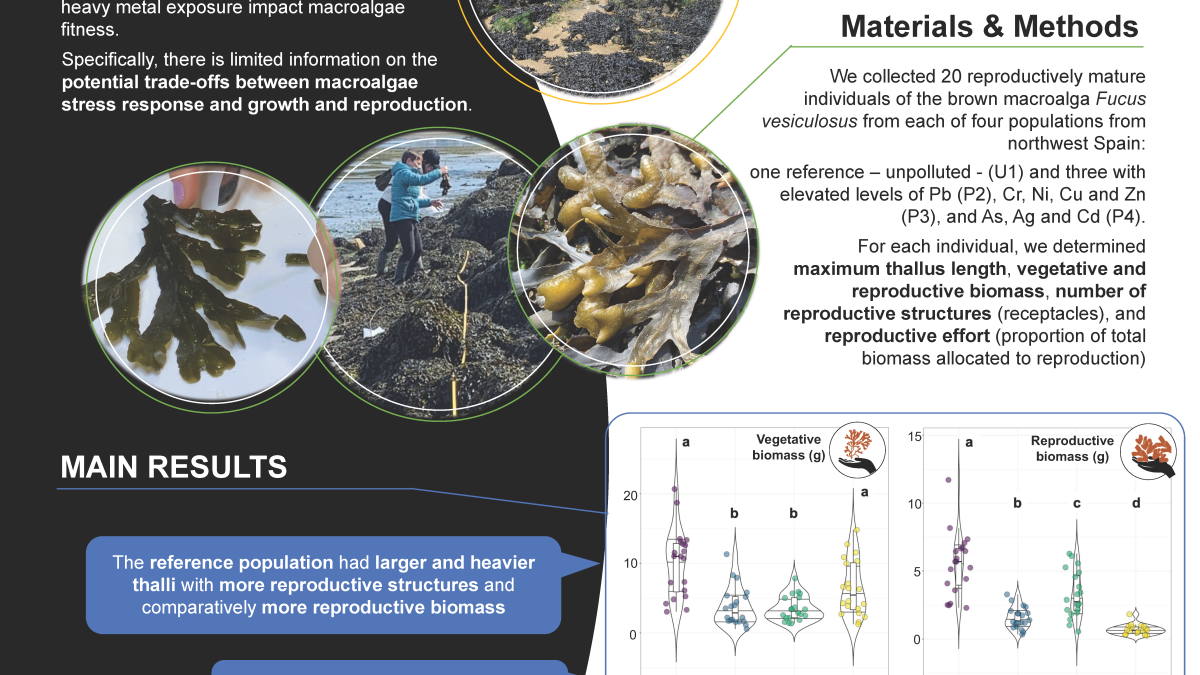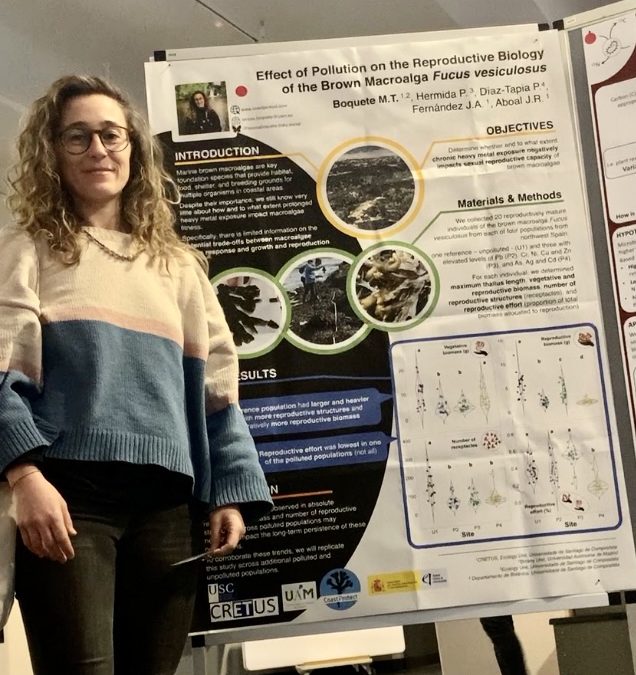During the months of April and May 2024, Teresa Boquete, accompanied by Patricia Hermida Sestayo (student of Biology, who was doing her TFG) and Dr. Pilar Diáz Tapia (professor of the USC, who is a phycologist with a scientific production of high impact), carried out different samplings. These samplings were carried out as a screening in 3 locations in order to know the sex ratio in F. vesiculosus. The differences between the sexes in terms of reproductive effort, morphological variables and concentrations of potentially toxic elements will also be determined. Once the methodology has been validated and the results processed, the sampling will be extended to new sites in order to obtain robust conclusions. We just need the elemental analysis; we will update the information!.
26 June 2024
Share

